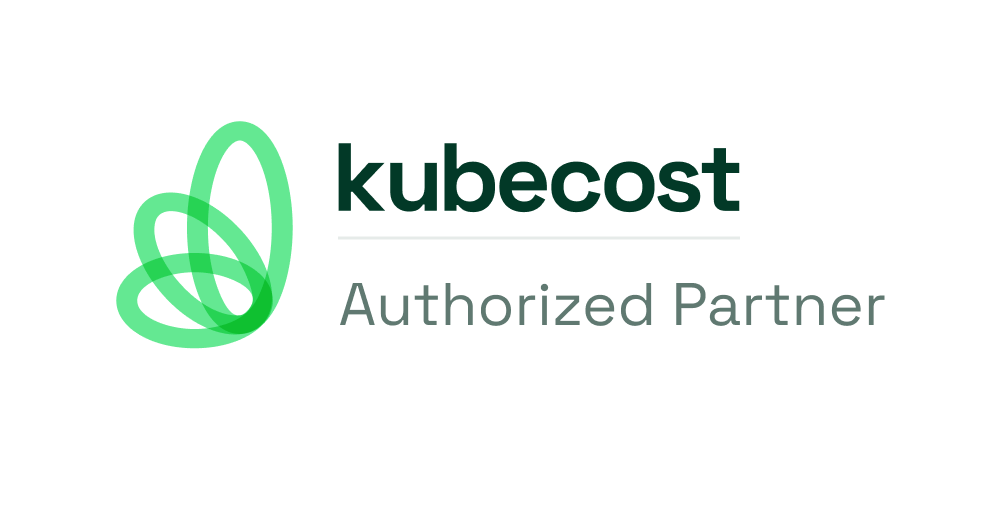Kubecost is a popular tool designed to provide cost monitoring and resource allocation insights for Kubernetes clusters. It helps organizations better understand their resource usage, optimize cost efficiency, and make more informed decisions about their Kubernetes deployments.
What is Kubecost?
Kubecost allows organizations to monitor and manage their Kubernetes costs and resource allocations. It provides real-time visibility into resource usage, cost allocation, and efficiency across your entire Kubernetes cluster.
With Kubecost, you can:
Gain insights into the cost of individual Kubernetes resources such as nodes, namespaces, deployments, and pods.
Identify and eliminate unused or underutilized resources.
Understand and optimize cluster capacity and performance.
Set budgets and alerts to proactively manage costs.
Kubecost Features
Standard features include:
- Cost Allocation: Flexible, customizable cost breakdown and resource allocation for accurate showbacks, chargebacks, and ongoing monitoring
- Unified cost monitoring: See all of your Kubernetes and out-of-cluster spend in one place, with full cloud service billing integration
- Optimization Insights: Get customized recommendations based on your own environment and behavior patterns
- Alerts & Governance: Achieve peak application performance and improve reliability with customizable alerts, configurable Availability Tiers, and real-time updates.
- Purpose-built for teams running Kubernetes: Running containers on Kubernetes requires a new approach for visualizing and optimizing spend. Kubecost is designed from the ground up for Kubernetes and the Cloud Native ecosystem.
- Own & control all of your own data: Kubecost can be fully deployed in your infrastructure— Kubecost does not require you to egress any data to a remote service. It’s deeply important to us that users are able to retain and control access to their own private information, e.g. sensitive cloud spend data.
- Built on open source: Kubecost began as an open source project with a goal of giving small engineering teams access to great cost visibility. As a result, our solution is tightly integrated with the open source cloud native ecosystem, e.g. Kubernetes, Prometheus, and Grafana.
For medium-sized teams and companies with more complex infrastructure you need the right features in place for efficiency, administration, and security. Kubecost Business offers even more features and control so that any team can use our products, according to your entire organization’s standards.
- Multi-cluster visibility: View all Kubernetes clusters by easily toggling between each individual cluster. Supports installation of Kubecost across an unlimited number of individual clusters.
- Long-term metric retention & saved reports: Retain spend, allocation, and efficiency data for up to 30 days. Provides custom reports saving for easily sharing across teams.
- Team alerts & updates: Kubecost alerts allow teams to receive updates on real-time Kubernetes spend.
- Business support: Direct engineering and product support via Slack channel, video, and phone.
For larger teams and companies with more complex infrastructure, you need the right features in place for efficiency, administration, and security. Kubecost Enterprise offers even more features and control so that any team can use our products, according to your entire organization’s standards.
- Unified visibility across all Kubernetes clusters: View aggregate spend allocation across all environments by cluster, namespace, label, team, service, etc. As an example, this functionality allows you to see the cost of a namespace or set of labels across all of your clusters. An unlimited number of clusters is supported.
- Long-term metric retention: Retain data for years with various durable storage options. Provides record keeping on spend, allocation, and efficiency metrics with simple backup & restore functionality.
- Access control with SSO/SAML: Finely manage read and/or admin access by individual users or user groups.
- High availability mode: Use multiple Kubecost replica pods with a Leader/Follower implementation to ensure one leader always exists across all replicas to run high availability mode.
- Advanced custom pricing: Advanced custom pricing pipelines give teams the ability to set custom per-asset pricing for resources. This is typically used for on-prem and air-gapped environments, but can also be applied to teams that want to allocate internal costs differently than cloud provider defaults.
- Advanced integrations: Connect internal alerting, monitoring, and BI solutions to Kubecost metrics and reporting.
- Enterprise Support: Dedicated SRE support via private Slack channel and video calls. Expert technical support and guidance based on your specific goals. Sakura Sky also provides deep support for most cases.
Kubecost Deployment
To get the most out of Kubecost, follow their best practices, including this basic approach:
Install Kubecost using Helm: Kubecost is available as a Helm chart, making it easy to deploy and manage within your Kubernetes cluster.
Configure cloud provider integrations: Integrate Kubecost with your cloud provider to get accurate cost data for your cluster resources. This involves setting up API access and configuring the necessary credentials.
Set up persistent storage: By default, Kubecost stores data in an in-memory database. To ensure data persistence and enable historical analysis, configure a persistent storage solution such as a PVC (Persistent Volume Claim) or an external database.
Secure access to Kubecost: Restrict access to the Kubecost dashboard by implementing authentication and authorization mechanisms such as OAuth, OIDC, or RBAC.
Best Practices for Using Kubecost
Once Kubecost is deployed, follow these best practices to make the most of its features:
Establish cost allocation policies: Define policies for allocating costs across your organization, such as by team, project, or environment. Use Kubecost’s native features like cost allocation by namespaces, labels, or annotations to implement these policies.
Set budgets and alerts: Establish budgets for different resources or projects and configure alerts to be notified when the budget thresholds are breached.
Monitor resource efficiency: Regularly review resource usage and efficiency metrics to identify opportunities for optimization, such as resizing or deallocating underutilized resources.
Integrate with existing tools: Connect Kubecost with your existing monitoring and alerting tools, such as Prometheus or Grafana, to create a unified view of your Kubernetes infrastructure and cost data.
Understanding Kubecost Data
Kubecost provides various reports and visualizations to help you understand your Kubernetes cost and resource usage data.
Here are some key metrics and reports to focus on:
Cost Allocation: This provides a breakdown of costs by resources, such as nodes, namespaces, deployments, and pods. Use this to understand how costs are distributed across your cluster and identify high-cost resources.
Efficiency: The efficiency report shows how efficiently resources are being used within your cluster. Use this report to identify underutilized resources and opportunities for optimization.
Savings: This highlights potential cost savings by recommending actions such as resizing nodes, deallocating unused resources, and adjusting resource requests and limits.
Historical Analysis: Kubecost enables you to analyze historical cost and resource usage data, helping you identify trends, patterns, and anomalies over time. Use this information to make informed decisions about capacity planning, resource allocation, and cost management.
Sakura’s Professional Services for Kubecost
Sakura Sky understands the importance of effectively managing Kubernetes costs and resource allocations. Our team of experts can help you unlock the full potential of Kubecost by providing a range of professional services, including:
Kubecost Setup and Configuration: Our team can assist you in deploying Kubecost within your Kubernetes cluster, configuring cloud provider integrations, setting up persistent storage, and implementing access control mechanisms to ensure a secure and reliable Kubecost installation.
Kubecost Recommendations Implementation: Our experts can help you analyze Kubecost’s cost and resource usage reports, identify opportunities for optimization, and implement the recommended actions. This includes resizing nodes, deallocating unused resources, and adjusting resource requests and limits to optimize your Kubernetes infrastructure.
Customized Cost Allocation Policies: We can help you define and implement customized cost allocation policies tailored to your organization’s needs, using Kubecost’s native features like cost allocation by namespaces, labels, or annotations.
Integration with Existing Tools: Our team can assist you in integrating Kubecost with your existing monitoring and alerting tools, such as Prometheus or Grafana, to create a unified view of your Kubernetes infrastructure and cost data.
Ongoing Support and Training: We offer ongoing support and training to help your team better understand Kubecost and its features, enabling you to make more informed decisions about your Kubernetes deployments and cost management.
Learn More
Kubecost is a powerful tool for organizations looking to gain insights into their Kubernetes resource usage and cost efficiency. By leveraging Sakura’s professional services, you can ensure a smooth implementation of Kubecost and take full advantage of its features.
Contact us to learn more.







